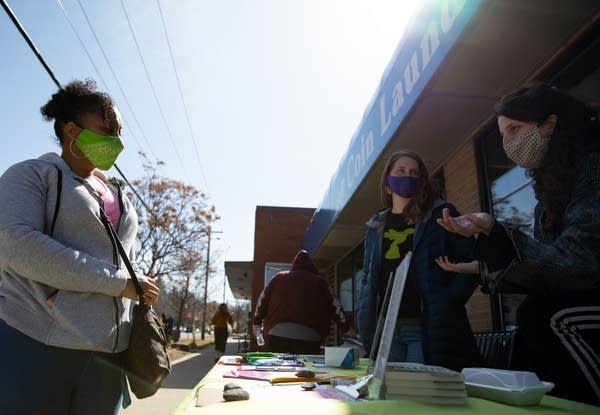Economic pressures threaten waves of change on St. Paul’s West Side

Housing organizer Charlotte Colantti (right) talks with Latricia Dilworth in front of the Beautiful Laundrette while tabling for the West Side Community Organization's housing organizing campaign on March 20 in St. Paul.
Kathryn Styer Martinez | MPR NewsGo Deeper.
Create an account or log in to save stories.
Like this?
Thanks for liking this story! We have added it to a list of your favorite stories.


